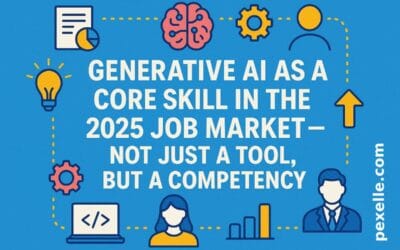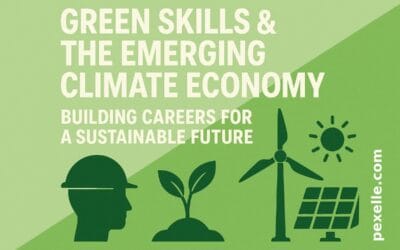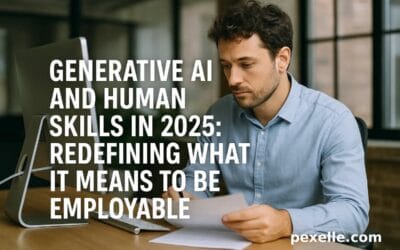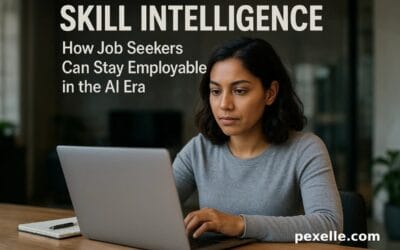The Fusion of Soft and Hard Skills: Why the Line Between Them Is Fading in 2025
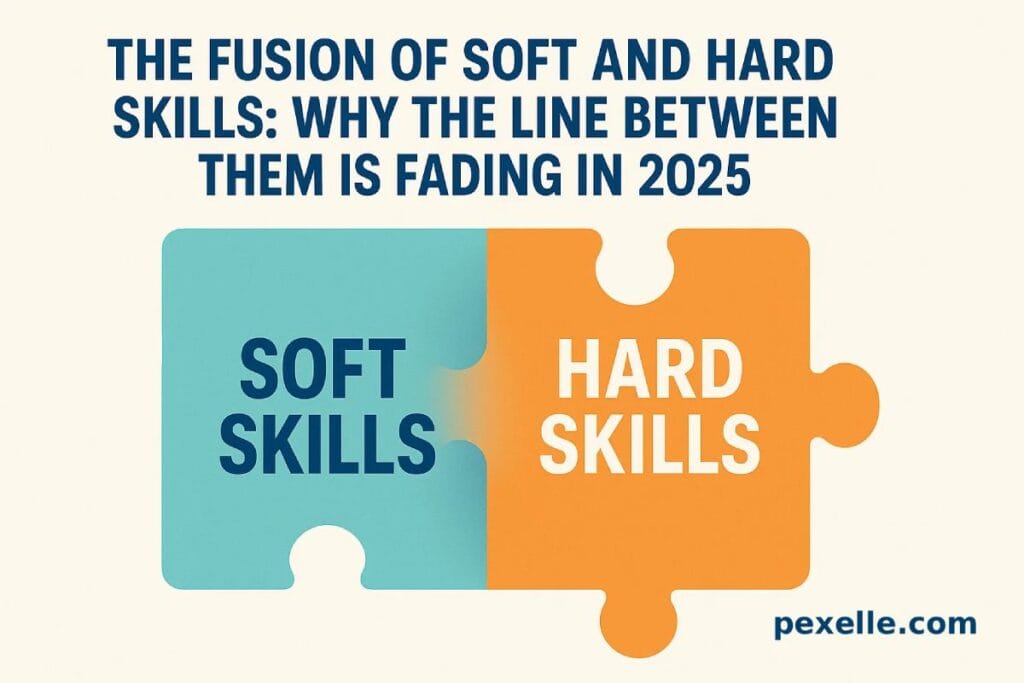
1. The Old Divide: Technical Skills vs. Human Skills
For decades, the job market was framed around a binary distinction: technical skills (the “hard” ones) and human skills (the “soft” ones). Engineers coded, designers created, managers led. Each role had its lane.
But in 2025, that separation is collapsing.
Automation, AI copilots, and digital collaboration tools have blurred the boundaries between roles. A data analyst today needs storytelling and empathy to communicate insights. A marketer must understand analytics dashboards and prompt engineering. Even a developer now collaborates with generative AI, requiring emotional intelligence to guide human-AI teamwork.
The key realization? The value of a professional is no longer defined by what they know, but by how effectively they combine knowledge, creativity, and communication in real contexts.
2. The Drivers Behind the Convergence
Several deep shifts are erasing the old distinction between soft and hard skills:
- Generative AI as the great equalizer
Tools like ChatGPT, Gemini, and Copilot have made technical knowledge more accessible. The ability to ask better questions (a soft skill) now matters as much as knowing code syntax. - Project-based and cross-functional work models
Organizations are forming fluid, agile teams where data scientists work with designers, educators, and marketers. That demands collaboration, adaptability, and leadership across disciplines. - Remote and hybrid collaboration
Communication is no longer face-to-face. Managing tone, context, and culture across digital tools has turned empathy and clarity into critical productivity multipliers. - Skill-based hiring revolution
As degrees lose dominance, hiring is shifting toward skill portfolios. Companies want people who can adapt — blending technical proficiency with resilience, self-learning, and emotional stability.
Together, these shifts make “soft” and “hard” skills inseparable. The real skill is synthesis.
3. Hybrid Skills: The New Power Zone
The most in-demand profiles of 2025 are hybrids — professionals who sit at the intersection of domains. Here are some examples:
| Hybrid Role | Technical Skills | Soft Skills That Amplify Them |
|---|---|---|
| AI Product Manager | Machine learning basics, data pipeline understanding | Storytelling, negotiation, ethical reasoning |
| Data Communicator / Analyst | SQL, Python, visualization tools | Empathy, business translation, narrative clarity |
| Learning Experience Designer | EdTech tools, UX design | Creativity, behavioral psychology, adaptability |
| Sustainability Engineer | Climate modeling, simulation tools | Cross-sector collaboration, system thinking |
| Blockchain Project Lead | Smart contracts, tokenomics | Trust-building, stakeholder management |
These hybrid profiles represent the core workforce of the next decade — people who merge cognitive precision with emotional intelligence.
4. From “Soft” to “Smart”: Redefining Skill Taxonomy
Calling communication, empathy, or adaptability “soft” is outdated — even misleading. These are strategic cognitive skills that determine whether technical abilities produce business value.
In the new taxonomy of work:
- Soft skills are becoming “smart skills” — meta-skills that govern how technical knowledge is applied.
- Hard skills are becoming “dynamic skills” — constantly updated through AI-assisted learning.
- The interface between them — sense-making, problem-framing, and contextual reasoning — is where human advantage lies.
This fusion defines the “augmented professional” — someone who can think algorithmically yet act humanly.
5. Education and Training Are Still Catching Up
Unfortunately, most education systems still teach in silos: coding classes separate from communication courses, theory detached from teamwork.
But companies and platforms like Coursera, LinkedIn Learning, and Pexelle-style micro-credential ecosystems are changing that. They focus on project-based, skill-integrated learning — where a learner must use both technical tools and interpersonal reasoning to complete tasks.
The most effective learning models now simulate real-world ambiguity:
→ AI writes part of the code, but the learner must interpret errors.
→ The task changes mid-project, forcing adaptability.
→ A peer review adds emotional feedback loops.
That’s what prepares people for 2025 reality — not rote memorization but flexible synthesis.
6. What Employers Now Look For
Leading employers — from Microsoft to smaller digital startups — are re-defining their skill frameworks around four blended competencies:
- Tech fluency – ability to understand, talk, and reason about technology even outside one’s specialty.
- Adaptive learning – curiosity and the capacity to unlearn outdated patterns.
- Interpersonal intelligence – empathy, persuasion, and negotiation across digital mediums.
- Creative problem-solving – connecting unstructured data with human insight.
Job postings increasingly list combinations like “analytical + storytelling” or “coding + collaboration” rather than single-lane abilities. The market is rewarding integration thinkers — not specialists trapped in silos.
7. Implications for Job Seekers and Educators
If you’re preparing for the future workforce, here’s the blunt truth:
Technical mastery alone will not save you.
Neither will charm without competence.
The winners of 2025 and beyond are professionals who:
- Learn technical tools fast but stay emotionally grounded.
- Communicate with precision and empathy across teams.
- See technology not as a replacement, but as an amplifier of human creativity.
Educators, likewise, must move beyond “curriculum delivery” toward ecosystem orchestration — linking industry projects, AI tools, and peer interaction.
8. The Pexelle Perspective: Micro-Skills in Motion
Platforms like Pexelle are uniquely positioned to map and certify this new fusion of competencies.
By breaking down learning into micro-skills — for example, “data visualization with empathy” or “AI prompt engineering with ethical awareness” — professionals can demonstrate real-world adaptability.
In a world where automation handles the routine, humanized skill portfolios become the new résumé.
Pexelle’s role is to make these blended competencies visible, verifiable, and portable across careers.
9. Conclusion: The End of the Binary Era
The age of labeling skills as “soft” or “hard” is over. The modern professional is both a technologist and a humanist, capable of interpreting data through empathy and leading machines with purpose.
In 2025, the most valuable skill is not what you know — it’s how fluently you combine what you know with how you think, feel, and act.
As automation accelerates, the edge belongs not to the smartest algorithm, but to the most integrated mind.
Source : Medium.com
